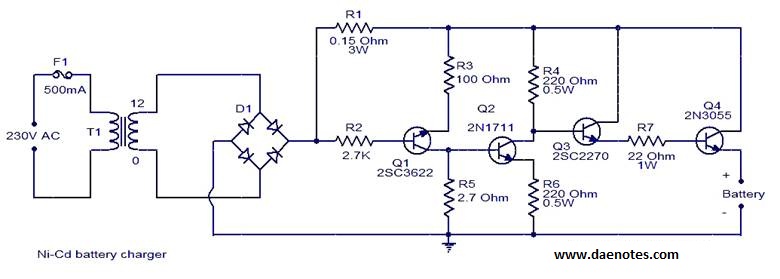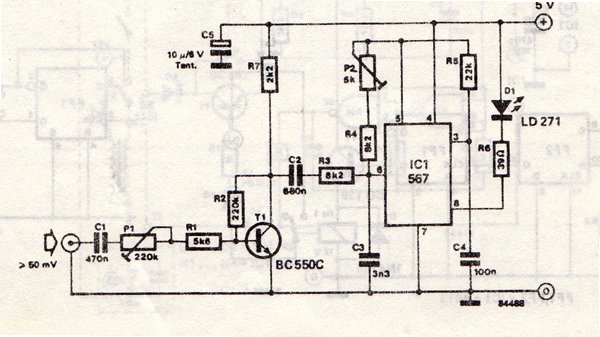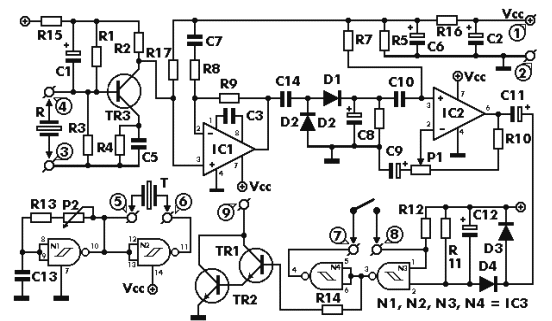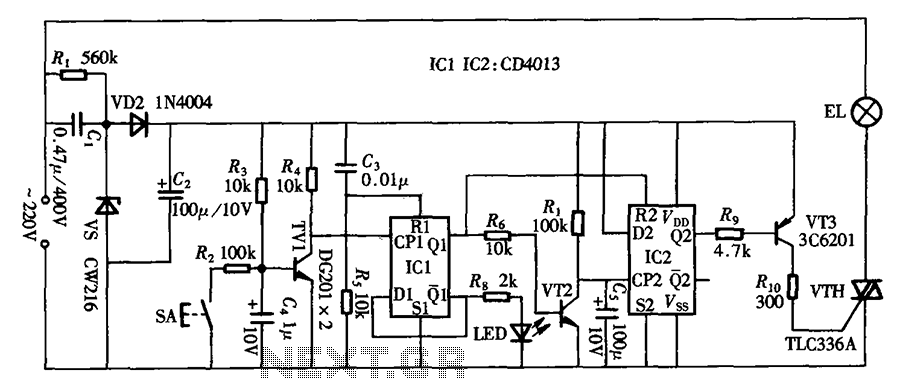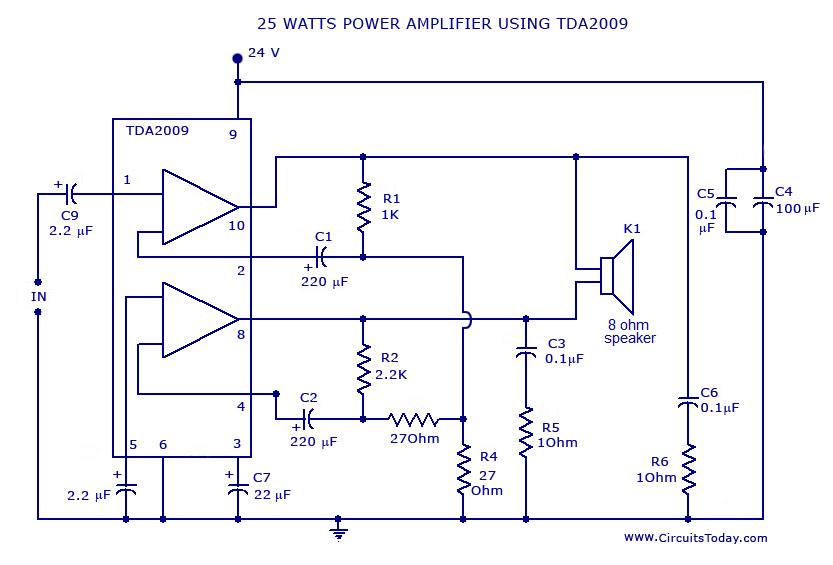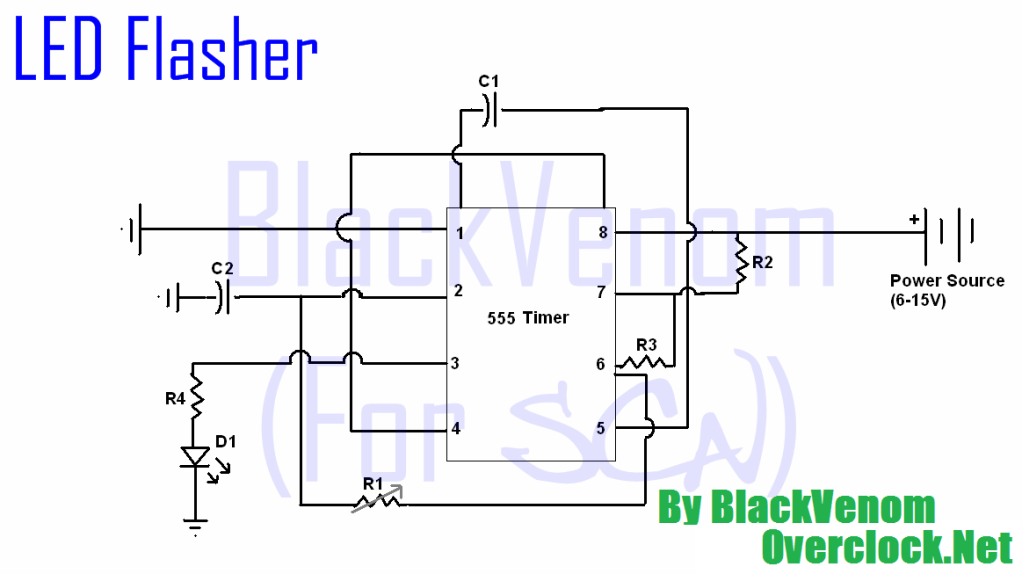
Portable Lamp Flasher circuit
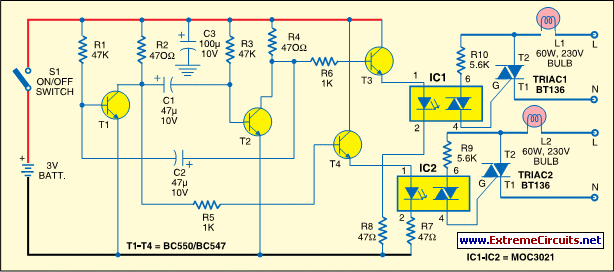
This is a portable, high-power incandescent electric lamp flasher. It functions as a dual flasher (alternating blinker) capable of managing two independent 230V AC loads (bulbs L1 and L2). The circuit is entirely transistorized and operates on battery power. The free-running oscillator circuit is implemented using two low-power, low-noise transistors, T1 and T2. At any given time, one of the transistors is conducting while the other remains in a blocking state.
The circuit design employs a dual flasher configuration that efficiently alternates between two incandescent bulbs rated for 230V AC, labeled L1 and L2. The primary function of the circuit is to create a visually appealing blinking effect, which can be utilized for decorative lighting or signaling purposes.
The oscillator is constructed with two transistors, T1 and T2, which are configured in a feedback loop that generates a square wave signal. This configuration allows for the continuous alternation of the conduction state between the two transistors. When T1 is in the conducting state, it allows current to flow through bulb L1, illuminating it. Simultaneously, T2 remains in the off state, preventing current flow through bulb L2. After a predetermined interval, the states of the transistors switch, with T2 turning on and T1 turning off, thereby illuminating bulb L2 while extinguishing bulb L1.
The use of low-power, low-noise transistors ensures that the circuit operates efficiently while minimizing electromagnetic interference, making it suitable for various applications. The battery-powered nature of the circuit allows for portability, enabling its use in locations without direct access to mains power.
Additionally, the design may incorporate resistors and capacitors to stabilize the oscillation frequency and ensure smooth operation. Diodes may also be included to protect the transistors from back EMF generated by the inductive loads, enhancing the reliability and longevity of the circuit. Overall, this portable flasher circuit exemplifies an effective application of transistor technology in creating dynamic lighting effects with high efficiency and portability.Here is a portable, high-power incandescent electric lamp flasher. It is basically a dual flasher (alternating blinker) that can handle two separate 230V AC loads (bulbs L1 and L2). The circuit is fully transistorised and battery-powered. The free-running oscillator circuit is realised using two low-power, low-noise transistors T1 and T2.
One of the two transistors is always conducting, while the other is blocking.. 🔗 External reference
The circuit design employs a dual flasher configuration that efficiently alternates between two incandescent bulbs rated for 230V AC, labeled L1 and L2. The primary function of the circuit is to create a visually appealing blinking effect, which can be utilized for decorative lighting or signaling purposes.
The oscillator is constructed with two transistors, T1 and T2, which are configured in a feedback loop that generates a square wave signal. This configuration allows for the continuous alternation of the conduction state between the two transistors. When T1 is in the conducting state, it allows current to flow through bulb L1, illuminating it. Simultaneously, T2 remains in the off state, preventing current flow through bulb L2. After a predetermined interval, the states of the transistors switch, with T2 turning on and T1 turning off, thereby illuminating bulb L2 while extinguishing bulb L1.
The use of low-power, low-noise transistors ensures that the circuit operates efficiently while minimizing electromagnetic interference, making it suitable for various applications. The battery-powered nature of the circuit allows for portability, enabling its use in locations without direct access to mains power.
Additionally, the design may incorporate resistors and capacitors to stabilize the oscillation frequency and ensure smooth operation. Diodes may also be included to protect the transistors from back EMF generated by the inductive loads, enhancing the reliability and longevity of the circuit. Overall, this portable flasher circuit exemplifies an effective application of transistor technology in creating dynamic lighting effects with high efficiency and portability.Here is a portable, high-power incandescent electric lamp flasher. It is basically a dual flasher (alternating blinker) that can handle two separate 230V AC loads (bulbs L1 and L2). The circuit is fully transistorised and battery-powered. The free-running oscillator circuit is realised using two low-power, low-noise transistors T1 and T2.
One of the two transistors is always conducting, while the other is blocking.. 🔗 External reference
